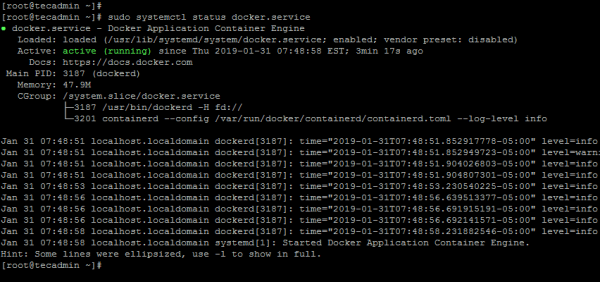


Using Red Hat Universal Base Images (standard, minimal, and runtimes)Įxpand section "2. Starting and stopping containers"Ĭollapse section "1.8.3. Investigating within a containerĮxpand section "1.8.3. Investigating running and stopped containers"ġ.8.2.3. Investigating running and stopped containers"Ĭollapse section "1.8.2. Investigating running and stopped containersĮxpand section "1.8.2. Working with containers"Ĭollapse section "1.8. Investigating images"Įxpand section "1.8. Investigating images"Ĭollapse section "1.7.2. Working with container images"Įxpand section "1.7.2. Working with container images"Ĭollapse section "1.7. Using containers as root or rootlessĮxpand section "1.7. Supported Architectures for Containers on RHELġ.6. Get Started with Linux Containers"Ĭollapse section "1. That's it! You have successfully deployed a static website with Docker and nginx in CentOS 7.Expand section "1. Test the website: You can now test your static website by visiting your server's IP address or domain name in a web browser.The container will serve the static website using nginx. This command will run the Docker container in detached mode and map port 80 of the container to port 80 of the host. Sudo docker run -name=my_website -d -p 80:80 mywebsite Run the Docker container: Once the Docker image is built, you can run it using the following command:.This command will build the Docker image with the tag "mywebsite" based on the Dockerfile in the current directory. Build the Docker image: You can now build the Docker image using the following command:.This Dockerfile uses the latest version of the nginx image and copies the contents of the current directory to the nginx html directory. You can create a new directory for this purpose and create a file named "Dockerfile" inside it with the following contents: Create a Dockerfile: Next, you need to create a Dockerfile for your website.Sudo yum install -y yum-utils device-mapper-persistent-data lvm2 You can do this using the following commands: Install Docker: First, you need to install Docker on your CentOS 7 server.

To deploy a static website with Docker and nginx in CentOS 7, you can follow these steps:


 0 kommentar(er)
0 kommentar(er)
